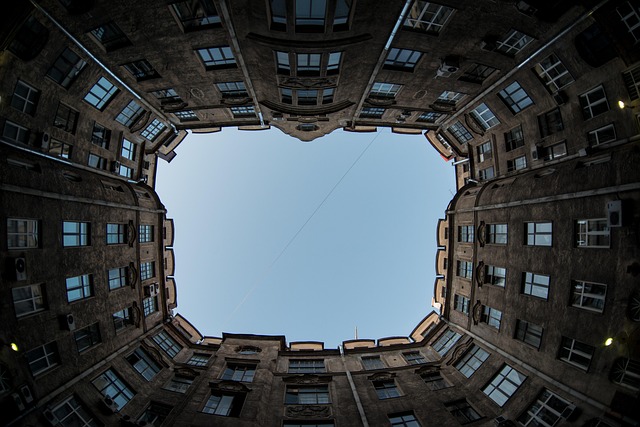GLULAM (glue-laminated timber) is a superior building material known for its strength, durability, and environmental benefits. Its multi-layered structure offers optimal efficiency in construction while preserving structural integrity, making it ideal for external projects and complex designs. GLULAM's sustainability, low maintenance, and cost-effectiveness compared to steel make it an eco-friendly choice for both straight and curved structures, aligning with the growing demand for green building solutions.
“Discover the revolutionary benefits of Glulam, a modern building material transforming the construction industry. This article explores Glulam’s distinct advantages over steel, focusing on its unparalleled strength and durability, making it a top choice for structural integrity. We’ll delve into the environmental sustainability aspects, showcasing why Glulam is an eco-friendly option. Additionally, we’ll uncover its design flexibility and cost-effectiveness, highlighting why architects and builders are increasingly opting for this innovative material.”
- Strength and Durability: GLULAM's Structural Superiority
- Environmental Benefits: A Sustainable Building Choice
- Design Flexibility: Unlocking Creative Possibilities
- Cost-Effectiveness: GLULAM vs Steel Comparison
Strength and Durability: GLULAM's Structural Superiority
GLULAM (Glulam) is renowned for its exceptional strength and durability, offering a significant advantage over steel in structural applications. This engineered wood product combines multiple layers of laminates, creating a structure that is both robust and flexible. The unique glulam panelization process ensures efficient construction while maintaining superior structural integrity. Each component contributes to the overall strength, making GLULAM capable of supporting substantial loads without compromising on long-lasting properties.
Unlike steel, which may require extensive reinforcement, GLULAM’s inherent strength reduces material waste and simplifies design processes. Its resistance to corrosion further enhances its longevity, especially in external construction projects exposed to varying weather conditions. The glulam structural advantages are evident in its ability to span longer distances with minimal support, enabling architects and builders to create innovative designs that were once restricted by traditional building materials.
Environmental Benefits: A Sustainable Building Choice
The choice of building materials has a significant impact on the environment, and glulam (glue-laminated timber) offers several advantages in this regard. Unlike steel, which is often associated with high energy consumption and carbon emissions during production, glulam is a sustainable alternative. Timber, when sourced responsibly, is a renewable resource that absorbs and stores carbon dioxide, contributing to better air quality and mitigating climate change.
Glulam architectural elements provide an eco-friendly solution for both straight and curved structures. The manufacturing process of glulam involves minimal waste generation compared to steel, and its longevity reduces the need for frequent replacements. Additionally, glulam structural integrity testing reveals exceptional performance, ensuring safe and durable buildings while minimizing the environmental footprint.
Design Flexibility: Unlocking Creative Possibilities
The unique design flexibility offered by glulam (glue-laminated timber) is a significant advantage over steel in various architectural applications. This innovative material allows for complex geometric shapes and curved structures, which can be challenging to achieve with traditional building materials. With glulam, architects and engineers have the freedom to unlock creative possibilities, resulting in visually stunning and unique designs.
The manufacturing processes of glulam involve laminating multiple layers of wood together with strong adhesives, ensuring superior structural integrity. This careful construction provides exceptional strength-to-weight ratios, enabling the creation of large spans and dramatic forms without compromising stability. Furthermore, glulam’s eco-friendly nature makes it an attractive choice for sustainable urban development, aligning with the growing demand for green building solutions.
Cost-Effectiveness: GLULAM vs Steel Comparison
When comparing the cost-effectiveness of GLULAM (a high-performance engineered wood product) and steel, it’s evident that GLULAM offers a compelling advantage for various construction projects. The initial investment in GLULAM is significantly lower than that of steel, making it an attractive option for budget-conscious contractors. This cost-efficiency is particularly notable in large-scale projects like bridge building and roof systems, where the savings can be substantial.
GLULAM panels for roof systems and glulam applications in bridge construction have proven to reduce material costs without compromising structural integrity. The versatile nature of GLULAM allows for complex designs and custom solutions, catering to the unique requirements of each project. For contractors, this means enhanced efficiency and profitability, as glulam framing advantages include reduced labor time and minimal waste generation on-site.
GLULAM (Glulam) presents a compelling alternative to steel in construction, offering enhanced strength, durability, and environmental sustainability. Its versatility allows for innovative design choices while maintaining cost-effectiveness. By embracing GLULAM, architects and builders can create structures that are not only structurally sound but also contribute to a greener future. This natural material’s advantages make it a superior option for those seeking robust, eco-friendly building solutions.






